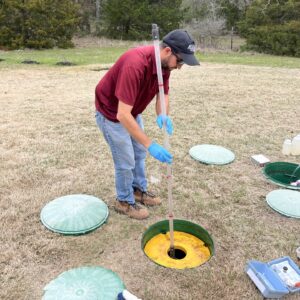[Convolvulaceae]
Identification
Field bindweed is a prostrate or climbing weed with stems up to 4 foot long. The alternate leaves are more or less arrowhead shaped. The white flowers are trumpet-shaped or bell-shaped and about one inch across.
Biology
Field bindweed has a deep taproot and does well in arid regions. It is highly adaptable and does well in many habitats. It flowers from June to frost in the fall of the year. The seeds remain viable in the soil for about 50 years.
History
It is native to the eastern Mediterranean region. It is now widely distributed in the United States and is a pest nearly everywhere except the southeast.
Status
Field bindweed is a problem in cultivated crops including corn, sugarbeets, wheat, soybeans and vineyards. It is more serious in arid regions of the West.
Management
The long survival of the seeds in the soil makes management difficult. The deep taproot allows for good survival in dry conditions.
Agents
Literature
Whitson, T. D., L. C. Burrill, S. A. Dewey, D. W. Cudney, B. E. Nelson, R. D Lee and R. Parker. 1991. Weeds of the West. The Western Society of Weed Science. 630 pp.
Ciomperlik, M. A., J. M. Chandler, and C. J. DeLoach. 1992. Predation by the red imported fire ant on Tyta luctuosa, released for control of field bindweed. Southwestern Entomologist 17(3): 267-269.
Links




